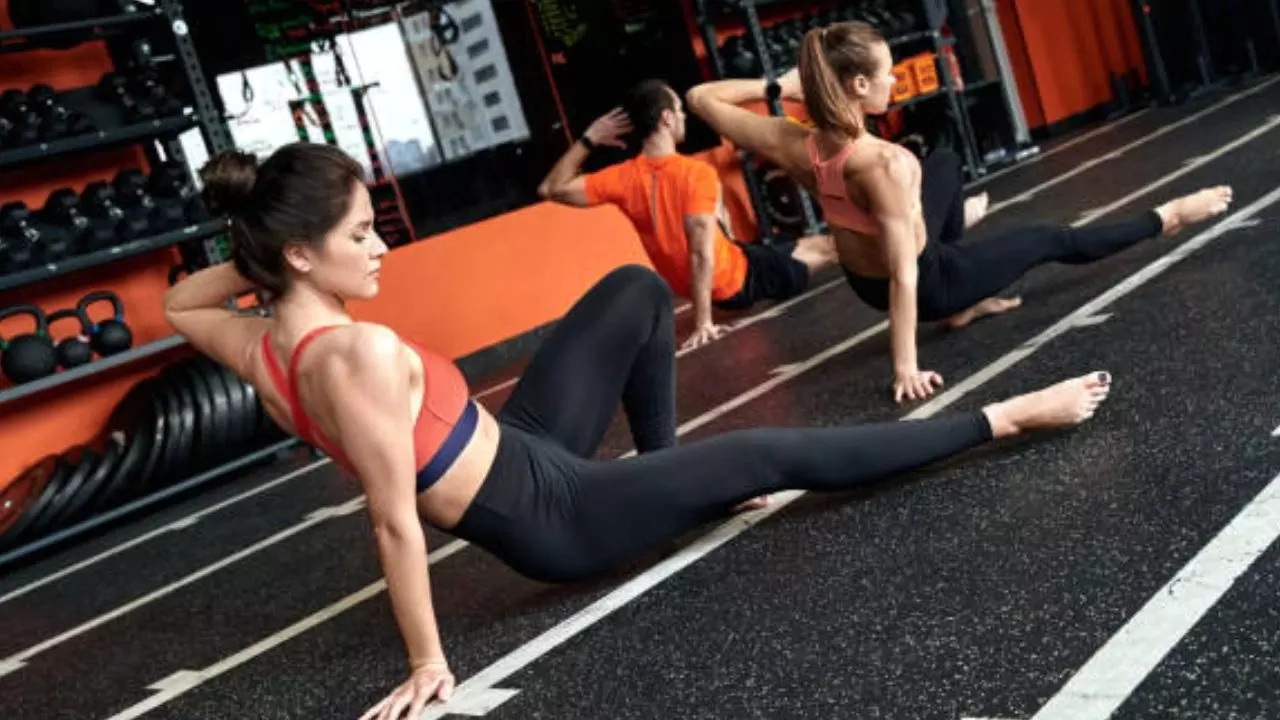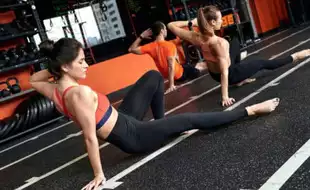
No Time To Hit The Gym? Here's Why Animal Flow Is The Ultimate Workout For You (Image Credits: iStock)
Hectic schedules and tight deadlines make us miss our gym sessions every now and then. This has led to a decrease in physical activities making us gain weight and extra belly fat. But worry no more! Animal Flow Training has been going viral across social media platforms. It is a new form of training gaining popularity among busy professionals, and it does not require any equipment. You can perform this workout even while staying at home. But how will it benefit our health?
We got in touch with Shreedhar R, Fitness Expert at Cult who shares that the training includes following animal movements to build strength, efficiency, and flexibility by combining elements of gymnastics, yoga, and primal movements. Animal Flow training is an ideal workout solution for people with a hectic schedule for the following reasons:
No Equipment Required
Many people aren't able to work out at home because of a lack of equipment. That problem doesn't exist with Animal Flow training, as it can be performed anywhere, whether in the office, hotel room, or home. There is also no setup time involved. The workout routine also requires minimal space. This accessibility makes it easy to stay consistent with one's fitness goals.
Time-Efficient
One of the most important features of Animal Flow is that it is time-efficient training. Even in as little as 20 minutes, through Animal Flow training, one can have a complete effective workout training targeted at strength and fitness. Busy professionals generally have limited time for workouts, and Animal Flow's compact sessions can fit perfectly into their lifestyle.
Mental Health Benefits
Animal Flow training is not just a physical workout, but it also provides various mental benefits. This practice requires more mental presence, hence improving your concentration abilities for work tasks. The animal-like movements also create a moving meditation effect that reduces stress. With regular practice, one can also improve mental resilience and help combat the effects of prolonged sitting.
Physical Health Benefits
Animal Flow training engages multiple muscle groups simultaneously, unlike traditional weightlifting exercises that often isolate individual muscles. The movements naturally increase one's flexibility and engage the core to develop robust midline control. Improving core strength is essential for working professionals as it has multiple benefits, such as proper posture and reduced risk of injury. This type of training develops functional strength, which is crucial for carrying out everyday activities.
How To Do Animal Flow Training?
Shreedhar R explains starting this training requires no previous experience and is simple. Various platforms provide tutorials that one can view for reference. For beginners, basic movements such as beast, crab, or ape positions are best to start with.
Step-by-Step Guide to Doing Animal Flow Training
Animal Flow is a bodyweight-based workout designed to improve strength, flexibility, mobility, and coordination by mimicking animal movements. Here’s a step-by-step guide to get started with the basics of Animal Flow:
Warm-Up (5-10 Minutes)
- Start with a warm-up to activate your muscles and increase mobility. Focus on dynamic stretches, especially for the shoulders, wrists, hips, and core.
- Example warm-up moves: shoulder circles, wrist rolls, hip circles, and deep lunges.
1. The Basic Animal Flow Movements
Animal Flow consists of various foundational moves called "form-specific stretches," which you combine into a flow. Here’s how to do some of the basic moves:
A. Beast Position
- Starting Position: Begin in a quadruped position, with hands directly under your shoulders and knees under your hips.
- Lift Knees: Lift your knees slightly off the ground, keeping them about an inch above the floor. Your body should be stable, with a flat back and engaged core.
- Hold: Maintain this position, focusing on core engagement and stability.
B. Crab Position
- Starting Position: Sit on the ground with hands behind you and feet flat in front, hip-width apart.
- Lift Hips: Lift your hips off the ground so you’re balancing on your hands and feet. Keep shoulders stable and core engaged.
- Hold: Maintain this position, ensuring your chest is open and your core is braced.
2. Transition Movements
A. Crab Reach
- From the Crab Position, extend one arm overhead and lift your hips higher, arching your back slightly. Press through the grounded hand and opposite foot to reach up and back, feeling a stretch along your torso.
- Return to the original position and repeat on the other side.
B. Travelling Beast
- From the Beast Position, move forward by stepping with opposite hands and feet (right hand, left foot together, then left hand, right foot).
- Keep your back level and core stable throughout the movement.
C. Advanced Movements
Once you’re comfortable with the basic positions, try adding more dynamic, flowing movements:
3. Side Kickthrough
- Begin in the Beast Position. Lift one hand and the opposite foot off the floor.
- Rotate your torso as you extend your leg out to the side, kicking through. Your grounded arm and foot should support you.
- Return to Beast Position and repeat on the opposite side.
4. Scorpion Reach
- Start in the Beast Position. Lift one leg, bending at the knee, and rotate your hip outward, bringing your foot over to the opposite side of your body.
- This move opens your hips and engages your core. Return to the Beast Position.
5. Create a Flow
Once you’re comfortable with these positions and transitions, start combining them in sequences:
- Example flow: Beast > Travelling Beast > Crab Reach > Side Kickthrough > Scorpion Reach.
- Practice smoothly transitioning between moves, focusing on control and core engagement.
6. Cool Down and Stretch
Finish your workout with a cool-down session to relax the muscles and improve flexibility:
- Use stretches like Child’s Pose, Downward Dog, and Cat-Cow to stretch and release any tension.
Beginner Guide For Animal Flow Training
As one becomes proficient, one can increase the challenge level by linking movements into flowing sequences. Shreedhar R shares that a typical beginner guide for Animal Flow training would include:
• 5-7 minutes of basic position training
• 10-12 minutes of simple transitions
• 5-7 minutes of flowing combinations
“Busy professionals can include this workout either in the morning, during breaks, or when they need to relieve stress. To track progress in this type of training, you can monitor your movement quality, body flow, and control. If your posture improves and back pain reduces, you'll know you're doing the training correctly. Various professionals have reported seeing positive changes in flexibility and agility within weeks of consistent practice,” he said.
Get Latest News Live on Times Now along with Breaking News and Top Headlines from Fitness, Health and around the world.

